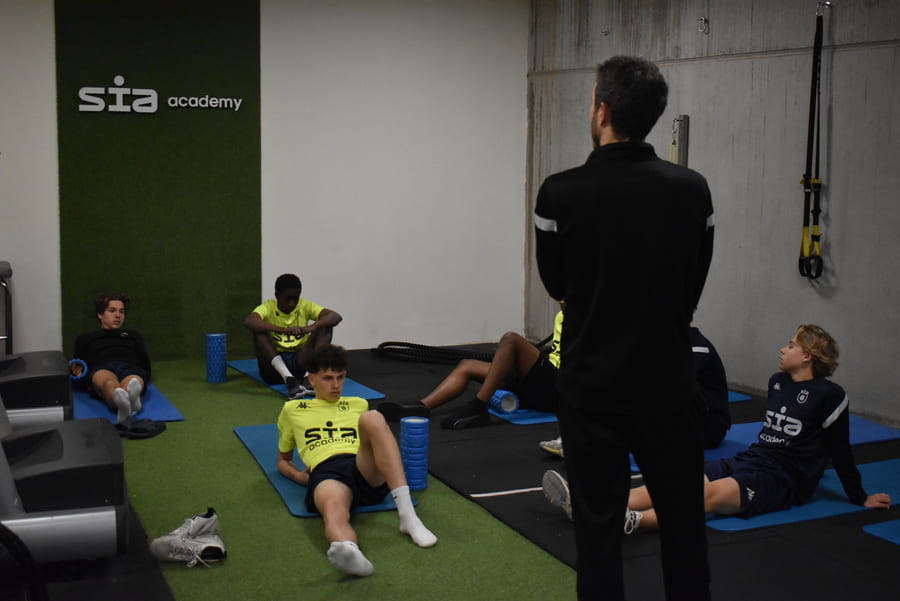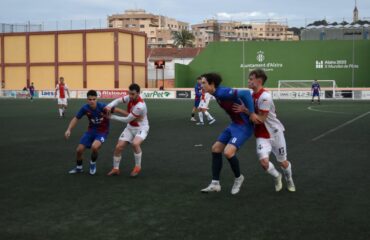In the world of youth football development, performance cannot be separated from health. SIA Academy has established carefully designed training protocols to optimize the physical and technical development of young players without jeopardizing their well-being, which can be affected by overload. Smart workload management is one of the key pillars of this philosophy.
Table of contents
Understanding overload: a key challenge in youth development
Overload in young athletes occurs when the body is subjected to a volume or intensity of training beyond its capacity to recover. This can lead to chronic fatigue, reduced performance, musculoskeletal injuries, and psychological issues like anxiety or lack of motivation. To prevent it, it’s essential to apply training principles adapted to each athlete’s development stage.
At academies like SIA Academy, which host players between the ages of 12 and 23, it is well understood that growth and physical maturity vary greatly from one player to another. Therefore, the key lies in individualized training, a hallmark of their methodology.

Initial evaluations and continuous monitoring
Everything begins with a comprehensive physical and medical assessment upon a player’s entry into the academy. This includes anthropometric measurements, body composition analysis, biomechanical studies, and fitness testing. Injury history is also reviewed, along with a full medical check-up.
With this information, the physical trainers and coaches at SIA Academy design a personalized plan that balances technical-tactical development with the player’s physical capacity. Throughout the season, regular check-ups are conducted to adjust workload and ensure the body is responding properly.
“No two players are the same, not even if they’re the same age. That’s why we work with data and constant observation. We adjust the loads weekly depending on how each player responds, and that has allowed us to greatly reduce the number of overuse injuries,” explains Ximo, physical trainer at SIA Academy. Moreover, all this information from Ximo is routinely shared with the other departments, especially with the coaches, so they can fully understand each player’s situation.
Smart training: quality over quantity
One of the most effective ways to prevent overload is to prioritize training quality over quantity. At SIA Academy, sessions are carefully structured to avoid unnecessary repetition and maximize effective time. This includes:
- Integrated training, where physical, technical, and tactical aspects are worked on simultaneously.
- Volume and intensity control, using tools like GPS trackers, heart rate monitors, and perceived exertion scales.
- Effort alternation, avoiding back-to-back high-intensity sessions and strategically combining aerobic, anaerobic, strength, speed, and recovery work.
Special attention is paid to periods of rapid growth, when the risk of overuse injuries is higher. During these stages, impact loads are reduced and compensatory exercises are introduced to maintain muscular and postural balance.
Education and prevention: building smart athletes
At SIA Academy, development goes beyond the pitch. Players receive education on rest habits, nutrition, hydration, and self-care. They are taught to recognize signs of fatigue, report physical discomfort early, and respect recovery time.
The sports psychology department also plays a crucial role, helping young athletes handle competitive pressure, stay motivated, and adopt a long-term development mindset instead of focusing on immediate results.

Recovery: a fundamental part of training
Recovery is not seen as a pause, but as an active part of training. For this reason, SIA Academy includes recovery protocols such as:
- Regular physiotherapy sessions, both preventive and corrective.
- Regenerative therapies, including cryotherapy, massage, hydrotherapy, or compression boots.
- Compensatory and mobility work, aimed at correcting muscular imbalances.
- Sleep and nighttime rest, with regulated schedules and strategies to improve sleep quality.
Elite football demands increasingly high physical preparation, but when it comes to young players, the approach must always be protective and responsible. At SIA Academy, the integral development of a footballer—physical, technical, mental, and emotional—is balanced with training practices that prevent overload and injury.
This combination of personalization, technology, education, and care enables tomorrow’s talent to grow in a safe, professional, and sustainable environment. Because building champions starts with building healthy individuals.






